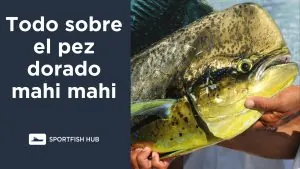Dolphins are incredibly fast swimmers, capable of reaching speeds over 30 mph in short bursts. But exactly how fast can different dolphin species swim on average?
The top speed of dolphins depends on a few key factors. Their anatomy and physiology play a major role, as does their reason for swimming fast at any given moment. Dolphins don’t always swim at top speeds. Rather, they cruise at slower paces and use rapid bursts of speed when needed.

Scientists use various methods to measure dolphin swimming speeds. By tracking dolphins with radar and underwater cameras, we can calculate their average and top speeds. Some species, like the common dolphin, can reach up to 37 mph. Others, like bottlenose dolphins, average closer to 20 mph.
Let’s explore dolphin anatomy, how their speed is measured, and the fastest dolphin species in more detail.
Dolphin Anatomy Built For Speed

Dolphins have evolved several adaptations that make them swift swimmers. Their fusiform body shape is streamlined, tapering at both ends to reduce drag. Dolphins also have smooth skin that minimizes friction in the water.
Other adaptations that aid speed include:
- Tail flukes – The powerful flukes thrust dolphins through the water. They move up and down like wings.
- Dorsal fin – Acts as a stabilizer and rudder to steer.
- Flippers – Used for steering, braking, and changing direction.
- Blubber – Provides buoyancy to help dolphins swim effortlessly.
The combination of these features allows dolphins to propel themselves forward and maneuver with agility.
How Do Scientists Measure Dolphin Speed?

Measuring the swimming speed of dolphins in the wild provides useful data but can be challenging. Researchers use various methods:
| Method | Description |
|---|---|
| Radar tracking | Tracks dolphin speed over longer distances |
| GPS tracking | Tracks movement and speed using satellite data |
| Underwater cameras | Records short sprints and bursts |
| Video analysis | Calculates speed based on footage |
| Attached devices | Records speed data directly on dolphins |
The recorded speeds help distinguish between the dolphins’ average cruising speed and maximum burst speed. Cruising speed is typically just 25-50% of their top speed. Dolphins conserve energy by cruising but can sprint extremely fast over short bursts to hunt or escape predators.
Factors That Influence How Fast Dolphins Swim

Dolphins don’t always swim at top speed. Many factors influence their speed, including:
- Age and health – Older or injured dolphins swim slower.
- Water conditions – Currents, waves, and water temperature affect speed.
- Hunting vs traveling – Dolphins swim faster when chasing prey.
- Predator evasion – Dolphins flee quickly from sharks at top speeds.
- Play and socializing – More leisurely speeds when playing or bonding.
- Boat wakes – Dolphins gain speed by riding boat wakes.
Dolphins modulate their speed based on the situation. By cruising slower and using rapid bursts, dolphins travel efficiently while still achieving fast speeds when needed.
The Fastest Dolphin Species

While all dolphins are swift swimmers, some species stand out for their top speeds:
| Dolphin Species | Top Speed |
|---|---|
| Orca | 35 mph |
| Common Dolphin | 37 mph |
| Bottlenose Dolphin | 22 mph |
Orcas
Also called killer whales, orcas are the largest dolphins and powerful swimmers. They reach lengths of 30 feet and weights of 6 tons. Orcas use their strength and size to propel through water at speeds up to 35 mph. Their black-and-white coloring helps camouflage them when hunting prey.
Common Dolphins
The common dolphin is the fastest species, reaching 37 mph. With over 6 million individuals, they are also the most abundant. Common dolphins grow to 7 feet long and frequently ride bow waves. They use echolocation to hunt small fish and squid.
Bottlenose Dolphins
The well-known bottlenose dolphin has a top speed around 22 mph. Their curved dorsal fins and gray coloration make them easily recognizable. Bottlenose dolphins are highly intelligent and social. They cooperate to herd fish into balls for easy feeding.
All three species are impressively fast. The sleek bodies and strong flukes that power dolphin swimming make them some of the speediest marine mammals.
How Do Dolphins Swim So Fast?
Dolphins accelerate by flapping their powerful tail flukes up and down. This propels them forward like a motor. The flukes are made of tough collagen fibers and can develop 220 pounds of thrust force. When swimming slowly, dolphins use more horizontal tail motion. At high speeds, the flukes move more vertically.
Dolphins also steer and maneuver using their flippers and dorsal fin. Flippers on the sides help them turn and brake. The dorsal fin acts as a rudder to provide stability and prevent rolling.
By expertly coordinating tail flukes, flippers, and dorsal fin, dolphins can achieve remarkable speeds with agility and precision. These adaptations allow dolphins to catch fast-moving prey like squid and salmon. No wonder dolphins can rocket through the ocean at such high velocities!
Summary
In summary, a dolphin’s anatomy and environment greatly impact its top swimming speed. The fastest dolphins reach around 35 mph, while moderate traveling speed is just 5-10 mph. Dolphins like orcas, common dolphins, and bottlenose dolphins are all capable of impressive bursts of speed. Their hydrodynamic bodies and strong flukes allow dolphins to claim the title of fastest swimmers in the sea.











